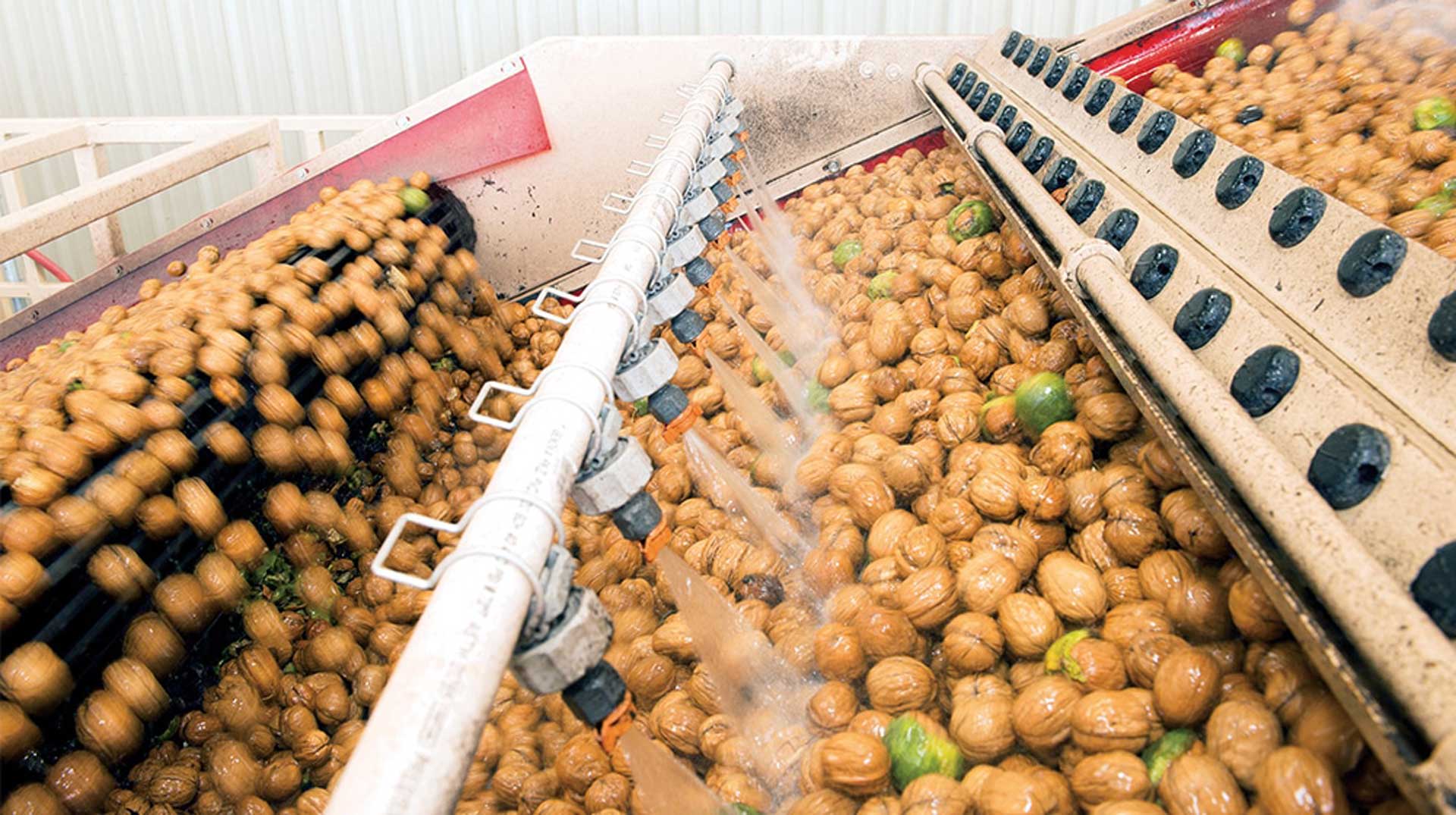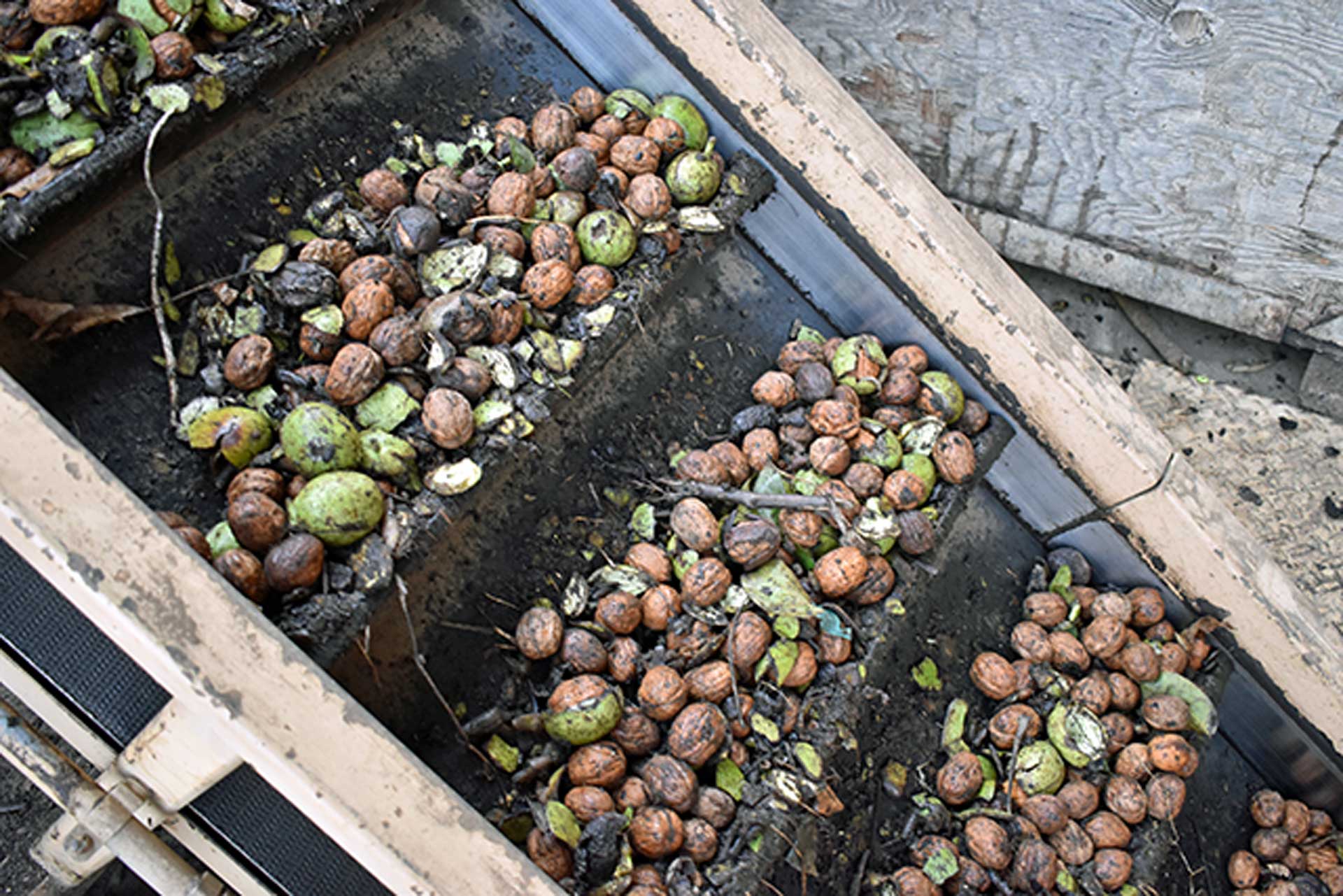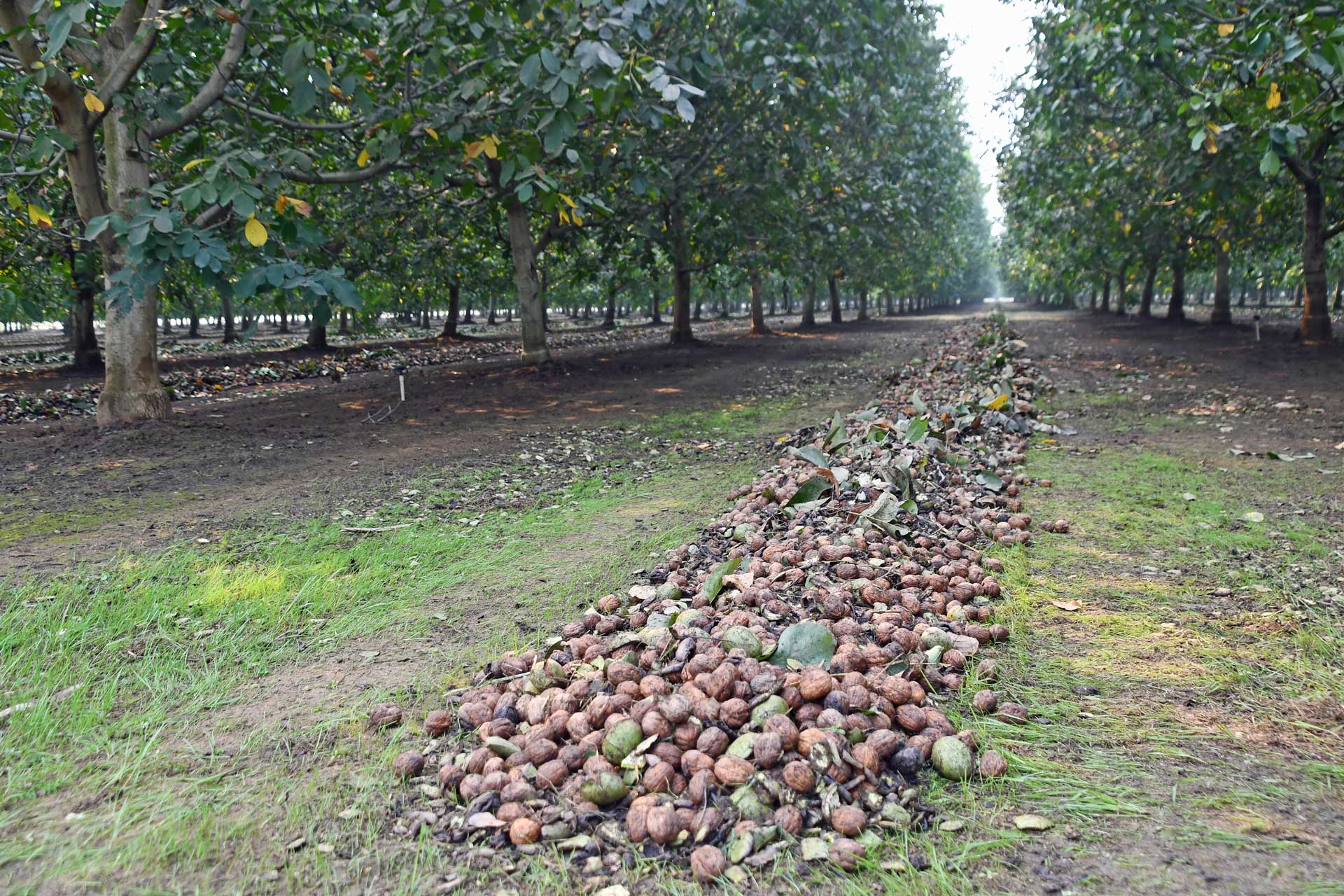
Over the past decade, California walnut production has soared to record heights as new plantings begin bearing. But production and exports from a number of other countries, including China and Chile, have grown at an even faster rate, worrying some U.S. walnut handlers.
To maintain export markets, they say, marketers should continue to promote the positive reputation of U.S. walnuts, the industry’s sustainability story and the nut’s healthful profile.
“It’s about reliability, honoring contracts, settling complaints and concerns promptly, things on the customer service side,” said Bill Carriere, president and CEO of Carriere Family Farms in Glenn. “California has always had that advantage.”
And Mike Poindexter, CEO of Poindexter Nut Co. in Selma, said the industry needs to develop new products that use walnuts, much like the almond industry has with its respective crop. His family-owned company now markets a line of flavored walnuts for snacking under the Crazy Go Nuts brand. Poindexter also applauded Mariani Nut Co. for its walnut milk.
“It would be nice to have 50 handlers coming out with new products on their own,” he said.

China Walnut Production
China has aggressively increased walnut orchard development during the past two decades as well as upping its quality. The country grows varieties selected and bred there that differ from the English walnut varieties grown in California.
Although the actual acreage is unknown, China has become the largest walnut producer in the world.
“China is improving their quality, and that’s a concern,” Carriere said. “They’ve gotten some good varieties and the yields are really high. They have good kernel weight as well as color. I’ve seen some halves that are beautiful. Taste is still subjective. The problem is they’ve been so cheap on their prices.”
Although many E.U. customers are still willing to pay for California nuts, Carriere said the more price-sensitive ones may take a chance with Chinese walnuts.
Poindexter said California walnuts need to remain competitively priced though not necessarily the cheapest.
“We can’t be 40% higher and go into the market where walnuts are a pricey item for people,” he said.
Both he and Carriere pointed to fall 2021 when initial USDA estimates put the California crop at 670,000 tons, prompting prices to rise on news of a shorter crop. Price-sensitive in-shell customers looked to China instead.
The California crop turned out to be 50,000 tons larger than initially estimated. “By the time we found out that the handler estimate was more accurate, that in-shell market was lost to China. And by the way, we have 50,000 tons more nuts than we thought we had,” said Poindexter, a California Walnut Board member.

Chile, a Southern Hemisphere Producer
Chile, which also has improved its quality, grows mostly Serr and Chandler walnut varieties, the same as California. The South American country has taken advantage of the walnut health benefits touted by the California industry, Carriere said.
“They’re kind of riding on our coat tails,” he said. “We’ve done a good job promoting walnuts in general.”
Poindexter said he views Chile as more of a friendly competitor since their spring harvest is opposite California’s fall harvest. This is especially important to markets, such as the Middle East, that don’t have good cold supply chains. Buyer will source from California after the fall harvest and from Chile after its spring harvest.
“Freshness is really important to them,” Poindexter said. “A lot of the open-air bazaars don’t have cold storage for keeping that product, so I would expect them to be much more active in the market.”
In addition, Carriere said the recent Russian invasion of Ukraine does little to help the world walnut market. Ukraine was a major producer, exporting much of its product to Russia.
Closer to home, both he and Poindexter said California walnut growers need to take a hard look at their orchards and possibly remove poorer-quality blocks that are underperforming or contain older varieties.
“We’ve enjoyed such high prices over the year’s past, I think we need to relook at how many acres we can support as far as the market and then remove our older varieties, like Chico and Tehama,” said Carriere, a California Walnut Board member. “There’s no way you can make any money with these, and it just adds to the problem.”
Poindexter agreed, saying, “10% of our volume are older varieties that need to come out of the market. We need to get back into alignment of supply and demand.”
In addition, Carriere said he favored increasing promotions. “I’m obviously a proponent of increasing marketing spending, whether it’s just California generic marketing or branded marketing; we need both.”

Shipping Challenges
Probably more of a concern than global competition has been recent shipping issues, Carriere said. He pointed to his family’s operation, which only exported about half as much in 2021 as it did in 2020. Supply was not an issue but rather obtaining enough shipping containers and transportation.
Importers have begun booking orders for May and June shipment, hoping to receive them before the big holiday season. But he said Chilean exporters face similar shipping back-ups.
“It’s delaying their shipments as badly as ours,” Carriere said. “Their harvest is coming up and they’re not going to get their stuff shipped out, so it will push everything back.”

A Decade of Growth
From 2011 to 2021, California walnut production increased by 46% while global production increased by 81%, according to figures presented by Claire Lee, California Walnut Commission assistant marketing director for international trade. In 2020, the state’s growers harvested a record crop of 783,000 tons. Of that, 63% was exported, making markets abroad crucial to the industry’s health.
Much of the growth has occurred during the past five years, with global production increasing by 235,618 metric tons, or 259,724 short tons, Lee said during the recent 2022 UCCE virtual statewide walnut series.
During the 2017-18 marketing year, the U.S. accounted for 29% of world production, with China accounting for 42% and Chile 5%. Five years later, the U.S. represented 27% of world production, China 49% and Chile 7%.
“Global production is outpacing California walnut production; that’s just because the countries that produce walnuts are producing more and more,” Lee said.
Broken down into global suppliers, the U.S. remains the top exporter with 54% of world trade during the 2020-21 marketing year. Only five years ago, it dominated with 68%. Exports from China have grown to 13%, up from just 2% in 2017-18. And Chile now accounts for 16% of exports compared to 13% five years ago.
Changing Economic Policy
Daniel Sumner, director of the UC Agricultural Issues Center and an agricultural economics professor, said Chile’s increasing walnut quantity and quality now makes the South American country a competitor. It also has made inroads into profitable export markets, such as the E.U., shared by the U.S.
How much more Chile expands walnut production and exports will depend on its political climate, he said.
“They have a changing economic policy,” Sumner said during the UC virtual statewide walnut series. “They had a very business-friendly economic policy for two decades. The current government is anti-government and anti-business. So that doesn’t change the amount of walnuts that are in orchards, but it does mean Chile, at least for a while, has these policies hostile to business.”
Determining actual acreage and production in China is difficult, since the government there doesn’t release figures, he said. But China is facing different political pressures that involve the government underwriting unprofitable businesses.
“The government has discovered that throwing money at businesses isn’t good,” Sumner said. “That doesn’t do anything for five- to ten-year-old walnut trees. Whether they replace those or not [in the future] is another question.”
‘The California Walnut Differences’
Lee said the California Walnut Commission, which promotes walnuts internationally, will continue to focus on the state’s reputation as a sought-after walnut producer. Included in the messaging are high food safety standards, year-round availability and high quality.
And it seems to resonate well with customers, based on consumer surveys conducted in Korea, Lee said. One respondent favored the image of California’s sunny growing climate and that the state’s walnut growers “know what they’re doing.”
Another respondent chose California walnuts because they worried about the food safety of Chinese products. “I don’t worry about California,” the respondent said.
While California walnuts are sold to more than 50 countries, the No. 1 customer remains the U.S., where domestic use takes about 30% of the state’s production.
At the core of the commission’s activities is getting more people abroad to eat more walnuts, said Pamela Graviet, commission senior marketing director, international.
“Per-capita consumption outside the U.S. is lower than we’d like it to be,” she said.
To that end, the grower-supported organization has promotional programs in nine key international markets. They focus on new ways to use and consume walnuts as well as the nut’s health benefits, supported by more than 30 years of research.
“To have walnuts more readily available, programs are also designed to inspire chefs and food manufacturers on how to use walnuts in menus and new products,” Graviet said. “This goes beyond snacking and baking to where walnuts can be easily incorporated into plant-based meat substitutes, offering flavor, texture and increased nutrition.”
In their favor, walnuts are the only tree nut that contains a significant amount of omega-3 alpha-linolenic acid, the plant-based omega-3 essential fatty acid bodies need but can only get from food. Several studies have shown diets rich in omega-3 ALAs offer multiple health benefits.

Vicky Boyd
A veteran agricultural journalist, Vicky Boyd has covered the industry in California, Florida, Texas, Colorado, the South and the Mid-South. Along the way, she has won several writing awards. Boyd attended Colorado State University, where she earned a technical journalism degree with minors in agriculture and natural resources. Boyd is known for taking complex technical or scientific material and translating it so readers can use it on their farms. Her favorite topics are entomology, weeds and new technology. When she’s not out “playing in the dirt,” as she calls agricultural reporting, Boyd enjoys running, hiking, knitting and sewing.















